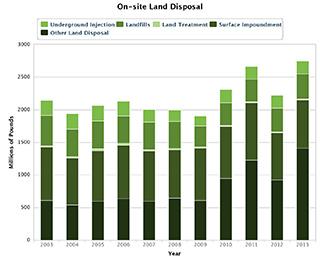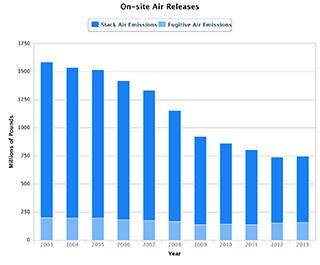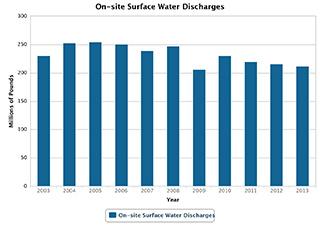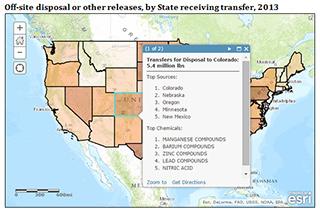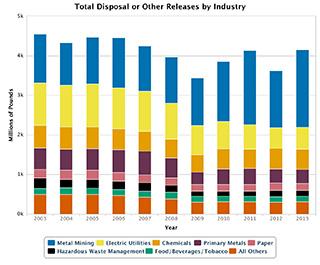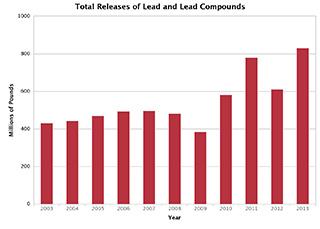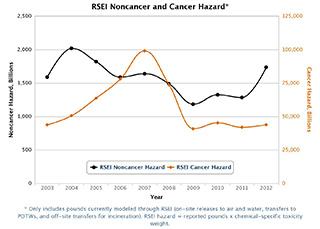2013 TRI National Analysis: Releases of Chemicals
Helpful Concepts
What is a release?
In TRI, a “release” of a chemical generally refers to a chemical that is emitted to the air, discharged to water, or placed in some type of land disposal unit.
Disposal or other releases of chemicals into the environment occur through a range of practices. They may take place at a facility as an on-site disposal or other release to air, water, or land; or they may take place at an off-site location after a facility transfers waste that contains TRI chemicals for disposal or other release.
Evaluating disposal and other releases can help the public identify potential concerns and gain a better understanding of possible hazards related to TRI chemicals. This evaluation can also help identify priorities and opportunities for government and communities to work with industry to reduce toxic chemical disposal or other releases and potential associated risks.
This figure shows that total disposal or other releases of TRI chemicals have decreased in the long term: they are down 7% from 2003 to 2013. From 2012 to 2013, there was a 15% increase in total releases due primarily to increases in on-site land disposal by the metal mining sector. The number of facilities reporting to TRI declined 12% from 2003 to 2013, although the count has remained steady at about 21,500 facilities since 2011.
Many factors can affect trends in total disposal or other releases, including production, management practices at facilities, the composition of raw materials used at facilities, and installation of control technologies. The long-term decreases from 2003 to 2013 in releases have been driven mainly by declining air releases, down 836 million pounds (53%) since 2003. Most of this decline is due to decreases in hazardous air pollutant (HAP) emissions, such as hydrochloric acid, at electric utilities. Reasons for the decreases include a shift from coal to other fuel sources and installation of control technologies at coal-fired power plants. As air emissions have accounted for a declining share of the total releases (down from 36% in 2003 to 18% in 2013), the portion of releases that are disposed on land has increased (up from 48% in 2003 to 67% in 2013).
| Sections in this chapter | |
|---|---|
| Land Disposal |
Air Releases |
| Water Releases |
Off-site Disposal or Other Releases |
| Releases by Industry |
Chemicals of Special Concern |
| Hazard and Risk of TRI Chemicals |
|
This page was published in January 2015 and uses the 2013 TRI National Analysis dataset made public in TRI Explorer in October 2014.


